Blog
Unpacked: Bicep ‘Glue’ - Recreated with Loopcloud
12 Mar '2024
We delve into a certified afterparty anthem, and how you can use Loopcloud samples and plugins to recreate it yourself

You don’t have to be an electronic music fan to instantly recognise the ethereal, gated tones of Glue by Bicep. You can barely attend a festival, go to an after-party or scroll through social media without hearing the song crop up.
For this instalment of Unpacked, we’re exploring the inner workings of Glue, trying to put our finger on what makes the track work as well as it does. We’ll also have a go at recreating the track with Loopcloud samples and plugins.
Track history
After launching their careers as a DJ duo and blog page under the alias Feel My Bicep, the Northern Irish duo began to create their own House edits for their sets. Before long, Feel My Bicep were writing and producing their own original music as Bicep.
Bicep’s debut album, Bicep, was released on Ninja Tune in 2017. It received praise from all corners of the music industry and placed 20th in the UK Albums Chart. There’s no doubt that Glue was the album’s magnum opus. It was voted as DJ Mag’s Track of The Year in 2017, and came 2nd in Mixmag’s 100 Tracks of the Year.
Bicep and their track Glue are frequently cited to be holding the torch for a new style of music that takes influence from 90s House, Trance, Rave, Breakbeat and UK Garage. The hybrid genre often referred to as Future Garage combines the above elements with euphoric melodies and contemporary sound design.
More generally, the style of music can be safely described as Dance or Electronic. Other artists in the same lane include Overmono, Ross From Friends, Jacques Greene and Fred Again. Below is our final Loopcloud version.
Breaking down Glue
Glue takes the “less is more” approach by the horns and manages to capture the nostalgia of 90s rave music with very few components and a no-frills arrangement. Despite its simplicity, we’d be willing to put money on this track becoming truly timeless.
Glue is in the key of E Minor and runs at a tempo of 130BPM, but let’s get our listening hats on and take a closer look at how Bicep’s biggest hit was made.
Drums
The drums feature a kick, snare, chopped-up breakbeat and a marching snare-style percussive element. While this remains consistent throughout the track, the drums briefly pause at the end of each fourth bar which helps to create energy and gives the synths some room to breathe as the arrangement unfolds.
The kick is programmed in a minimalistic UK Garage kick pattern and consists of a clicky midrange layer to provide punch and presence. This is layered with a sustained 808-style kick with a pitch drop, which is the primary source of sub-bass for the entirety of the song.
The top-end percussion is provided by the tambourine of a chopped-up breakbeat that is reminiscent of the classic Think Break. As well as the main pattern, there is a reversed tambourine hit at the end of each second bar which helps to pull the listener into the next section.
The snare used in Glue’s drums is a traditional UK Garage-style snare, layered with an acoustic snare taken from a breakbeat and arranged in a simple pattern that repeats throughout.
Set back behind all of the core drums is a skittering marching snare that helps to reinforce the groove of the track while sounding extremely off the grid. Like the tambourine, one of these snare hits is reversed at the end of each second bar.
Gated lead
The earworm in Glue falls at the feet of the eerie gated lead sound that persists throughout the track. While the melody is relatively simple, the interest in the sound stems from the rhythmic gating that follows the pattern of the marching snare. The timbre and harmonic content of the lead also evolve, adding to the overall interest and movement of Glue.
Pad
Behind the gated lead sound is a soft, sustained pad that reinforces the harmony of Glue. The pad sound plays the same four notes repeated in an eight-bar loop.
Atmospheric FX
In addition to the drums and melodic elements of Glue, there’s a layer of noise that adds a sense of space and contributes to the ethereal vibe of the track. The noise’s level and pan seems to randomly modulate throughout the track..
How to build a track like Glue with Loopcloud
Now that we’ve identified the core components of Bicep’s Glue, we can recreate the track from the ground up using Loopcloud samples, as well as the Loopcloud Drum and Play plugins.
Step 1: Drums
With our DAW’s tempo set to 130BPM, we can start to lay down our drum pattern.
First up is the punchy mid-range kick, which comes from Loopcloud Drum. More specifically, we’re using one of the kicks from the Cometh Break preset, which is part of Loopcloud’s Chopped Break EXP pack.
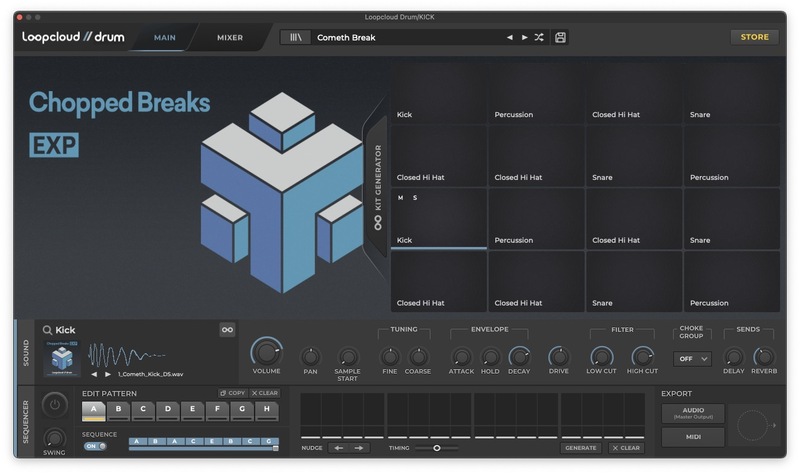
To beef out the low-end of our track, we’ve opted for the TTV_808Kick from the Loopmasters Trap Vocal Drop pack. The deep, sustained tone of the kick along with the subtle pitch decay matches it up to the original.
We’ve loaded the 808 kick into a sampler and increased the attack time to give the punchy kick more space.

We’ve employed a layering technique for the snare too, this time using the Legion Break preset. Using the Coarse control, we’ve brought down the pitch of the snare by five semitones. We’ve also reined in the tail of the snare using the Decay control.
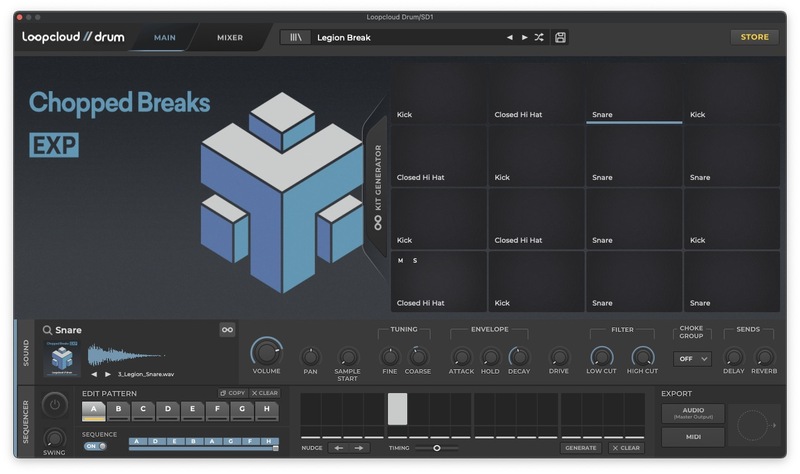
The first and third snare of each bar sound a little brighter than the second snare. We’ve achieved this effect by layering different snares for each hit. In this case, the PSL_Snare_17 adds some brightness to hits one and three of each bar, while the 2sga_clpsnr_quirk snare provides some impact and body on every hit.
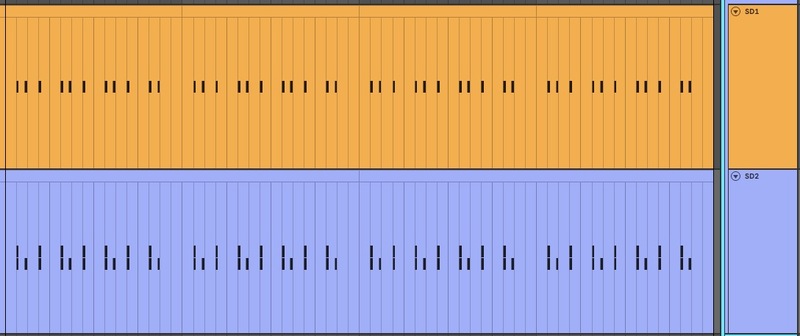
The tambourine used in our recreation is the FIH_125_Tambourine break loop which has been chopped up to fit around the kick and snare.
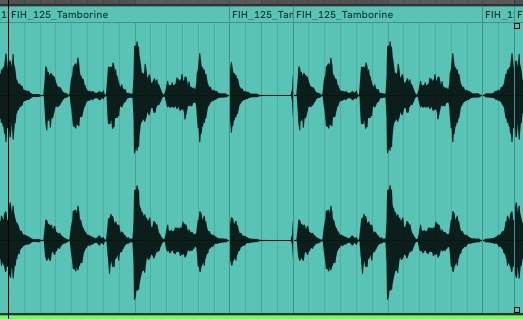
The final element of the drums is the marching snare-style percussion. We isolated a single hit from the YBG_183_6-8_Marching_Snare_Combi loop, pitched it up by five semitones and adjusted the amplitude envelope.

As with the tambourine, there’s a reversed percussion hit at the end of each second bar.
Step 2: Gated lead
With the drums programmed, let’s move on to the melodic elements of our Glue recreation. Start by finding a suitable synth lead or pad sound, and using it to write the melody. We’ll then come back to the gate trigger.
With a huge range of presets and a simple interface, Loopcloud Play makes it quick and simple to get your ideas out of your head and into your DAW. Using the Synth Pad tags in the browser, it didn’t take long to find the perfect pad sound.
We’re using the Debut preset from the Lush Analogue Pads pack, and modulating the Filter Cutoff using the Filter LFO section within Play’s Advanced tab.
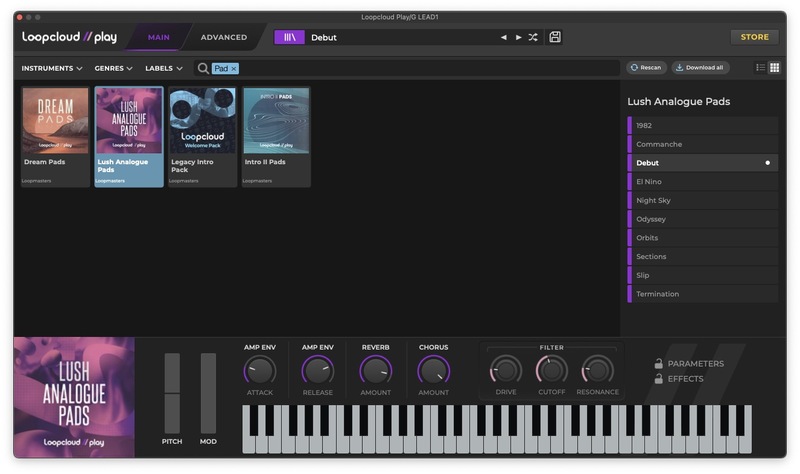
With your sound selected and your melody written, place a gate on the channel. While the gate pattern follows that of the percussion, using a simple synth gives us slightly more control over the shape of the gate.
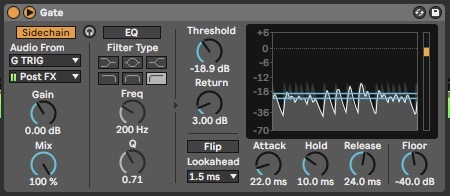
For that reason, we’ve copied the percussion’s MIDI clip onto a new channel with Ableton Live’s Operator, and set it as the Gate trigger on the lead sound. You can then adjust the synth’s amplitude ADSR, as well as the Gate’s.
Step 3: Pad
Once again, we’re looking to Loopcloud Play’s vast bank of presets for our Glue pad sound. This time, the Syn Pad 08 preset works well once you tame some of the high-end with Play’s built-in filter.
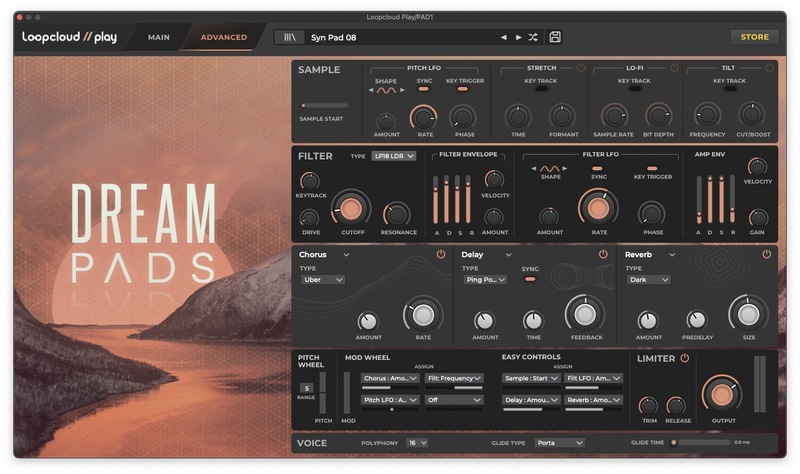
Despite being a pad sound, the Attack and Release in Glue are relatively quick, so we’ve tweaked that to suit the production.
Step 4: Atmos FX
The sporadic, spacey noise that comes and goes in the original version of Glue adds to the atmosphere and catharsis of the track. By stretching, rearranging and EQing the US_25_ATMOSHERE_SYNTH_Abm noise sample, we’ve created a layer of noise that works similarly to that of Bicep’s.

This is helped along by modulating reverbs and delays to add additional space, and an Auto Pan device that gradually moves the noise around the stereo field.
FAQs
How was Bicep - Glue made?
During a Reddit Ask Me Anything, Bicep explained that Glue started out as the drum pattern and some different chords and vocal chops. They then had Silkie Carlo join them in the studio to perform new vocals, which took the project to the next step. It wasn’t until they wrote new chords several months later that the final iteration of Bicep came together as it is known today.
Where was the music video for Bicep - Glue filmed?
The music video for Glue by Bicep was filmed all over the UK. All the locations are sites of original raves from the late ‘80s until the mid-'90s. The promotors at the time had to be inventive with their choice of venue to avoid being shut down by the police so it led to a departure of club-type spaces in city centres and a move into more obscure locations including an abandoned lido in Margate, remote airfields and half-demolished industrial estates. It was produced by Joe Wilson.
What key is Bicep - Glue in?
Glue by Bicep is in the key of E Minor. It has a tempo of 130bpm.
What year did Bicep - Glue come out?
Glue by Bicep came out on 1st September 2017. It featured on their debut album entitled Bicep, which was released by Ninja Tune.

